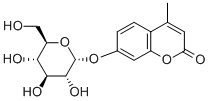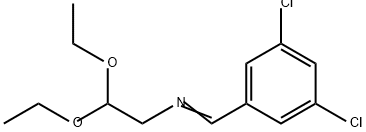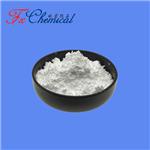
4-METHYLUMBELLIFERYL-ALPHA-D-GLUCOPYRANOSIDE HYDRATE
- Product Name4-METHYLUMBELLIFERYL-ALPHA-D-GLUCOPYRANOSIDE HYDRATE
- CAS17833-43-1
- CBNumberCB2254919
- MFC16H18O8
- MW338.31
- EINECS241-794-0
- MDL NumberMFCD00067661
- MOL File17833-43-1.mol
Chemical Properties
| Melting point | 171-173 °C |
| Boiling point | 626.9±55.0 °C(Predicted) |
| Density | 1.522±0.06 g/cm3(Predicted) |
| storage temp. | 2-8°C |
| solubility | DMSO: 50 mg/mL, clear, colorless to faintly yellow |
| form | White solid |
| pka | 12.73±0.70(Predicted) |
| color | White to Off-White |
| BRN | 1690776 |
| InChIKey | YUDPTGPSBJVHCN-JZYAIQKZSA-N |
| CAS DataBase Reference | 17833-43-1(CAS DataBase Reference) |
| UNSPSC Code | 12352204 |
| NACRES | NA.77 |
Safety
| Symbol(GHS) |

|
| Signal word | Warning |
| Hazard statements | H302-H315-H319-H335 |
| Precautionary statements | P261-P301+P312-P302+P352-P304+P340-P305+P351+P338 |
| Safety Statements | 22-24/25 |
| WGK Germany | 3 |
| F | 3-10-21 |
| HS Code | 2932209090 |


